Hosting a webinar is one of the best ways to connect and communicate with users.
Whether your organization focuses on informational, product-launch, or how-to webinars, having a good understanding of the basics will get you on the right track to hosting top-notch webinars every time.
To host a webinar
- Set goals
- Choose the right webinar software
- Find a good cohost
- Create top-notch promotional material
- Practice
- Answer questions live
Here’s how to get started.
Set goals
Every good webinar starts with a specific goal. Whether that goal is to spread awareness, increase attendance rates, or get more in-webinar participation, the key is to set at least one goal for your webinar so you have something to work toward.
Goals are important because they help hosts stay on track and remember what they want to achieve. A best practice is to set both big and small goals. Big goals are usually harder to achieve, so it’s good to have smaller, more measurable goals (aka easy wins) along the way. The smaller goals will help you build confidence in the work you’re doing and keep the momentum going, so you can eventually reach the big goal you’ve set for yourself.

By setting both small and big goals, you’ll feel like you’re constantly achieving throughout the entire webinar process. You’ll also make your boss happy by having a lot to report after the webinar ends.
Choose the right webinar software
There are quite a few webinar hosting platforms on the market, which is both good and bad for a webinar host.
Having options is always good, but too many options can become overwhelming. Our advice? Set aside the “hyped” tools or tools that are considered “cool” and choose the platform that’s best for your needs.
A great way to identify your needs is to simply write out a list of “must haves” and “nice to haves.” Clearly laying out your needs will help you stay on track when choosing a platform.
Additionally, many webinar platforms offer free trials, so if you’re on the fence about which one to choose, give them a try for free and see which works best for you.
Besides finding the right webinar software, make sure you’re using a powerful online form, such as a Jotform form, to gather registrations. We use our own forms for our webinars and connect them to GoToWebinar via Zapier.
These forms are much better than the forms that come with many of the webinar platforms because you’re able to customize branding and images, connect to third-party integrations, such as Google Sheets and PayPal, and so much more.
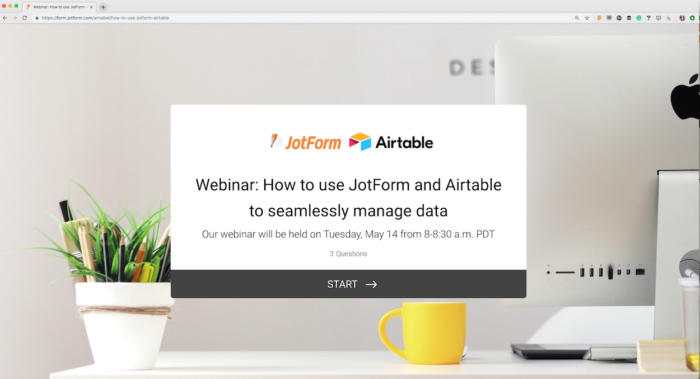
Having a robust registration form in place will save you time and make your data collection process a breeze.
Find a good cohost
Hosting or cohosting a webinar can be a lot of pressure, so make sure anyone you bring on is going to work well with you.
A “good” cohost will be unique to each host. (You might want to make another list for this.) Traits to look for can include someone who is willing to collaborate, contribute to the presentation, and provide feedback.
At Jotform, we’ve had some amazing cohosts, including integration partners, users, and thought leaders in specific industries. To make sure we’re on the same page, we create a Google Doc where both parties can include their goals for the webinar and deadlines for when they’ll have material completed.
Making sure everyone is in sync fosters better collaboration and a better end result.
Create top-notch promotional material
Developing high-quality promotional material is key for spreading the word about your webinar and getting the most registrants.
Each team has a different bandwidth for what they can produce, but it’s important to prioritize at least three emails: a promotional email, a reminder email, and a thank-you follow-up email.
The promotional email should be sent to a targeted list of users. The content should be very simple, with the name of the webinar, the date and time, a brief description, and a link to the registration form.
A reminder email comes in handy because it brings the webinar to the top of registrants’ minds. It’s especially useful if you send the promotional email far in advance of the webinar. Most webinar platforms, such as GoToWebinar, have a reminder email setting built in, and using it is as simple as checking a box to enable it. This email will typically go out automatically one day or one hour before the webinar begins and include a brief description, the date and time, and how to join.
Last, once the webinar finishes up, make sure to send a thank-you follow-up email to everyone who registered. In Jotform’s thank-you follow-up emails, we include one final brief description of the webinar, a link to the recording, and any additional resources we think would be beneficial to our users.
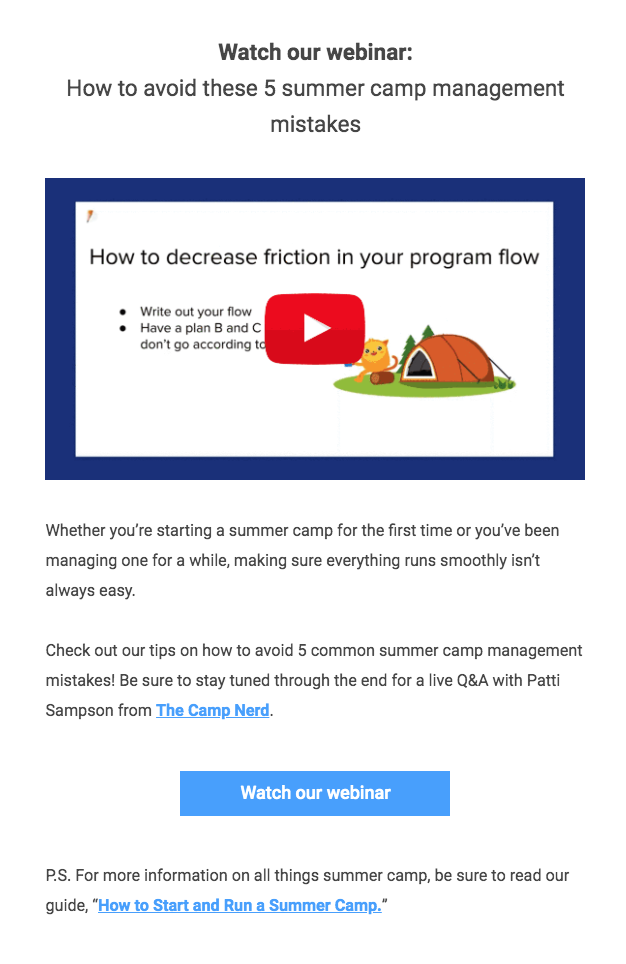
There’s added value to recording your webinar and publishing it to YouTube. It gives registrants another opportunity to view the webinar and generates organic traffic, drawing in people who might not have heard of your organization otherwise.
Practice, seriously
Practice makes perfect, and the same goes for hosting a webinar.
Oftentimes, hosts get busy coordinating all of the moving pieces in a webinar, and they don’t carve out enough time to run through the presentation and make sure there aren’t any snags.
It’s vital to practice your webinar at least once so you can make sure it’s not too long or too short, that slides flow well, and there are no bugs in your demo. If you practice beforehand, you can fix anything that’s not working and feel extra confident that everything is going to run smoothly during the actual webinar.
Answer questions live
Be sure to set aside some time for live questions and answers. Users love having their questions answered in real time and feel more connected to the product when there’s an actual person there helping them out.
If you’d like to further personalize the questions and answers, be sure to say the person’s name along with their question. In our GoToWebinar platform, attendees can easily type out questions for us and the rest of the audience. We can read their name out loud and answer their question for everyone.
Another thing to keep in mind is that if your webinar is about a technical topic, it might be a good idea to ask someone from your support team to join in and help answer questions. We do this for any product- or integration-focused webinars, just in case we need a little extra help.
Last, if you run out of time, give attendees a support email address or another way to get answers to their questions. They’ll appreciate it!
Take a deep breath; it’s going to be great!
With this mini-webinar training guide, you’re going to rock your next webinar. Good luck!


























































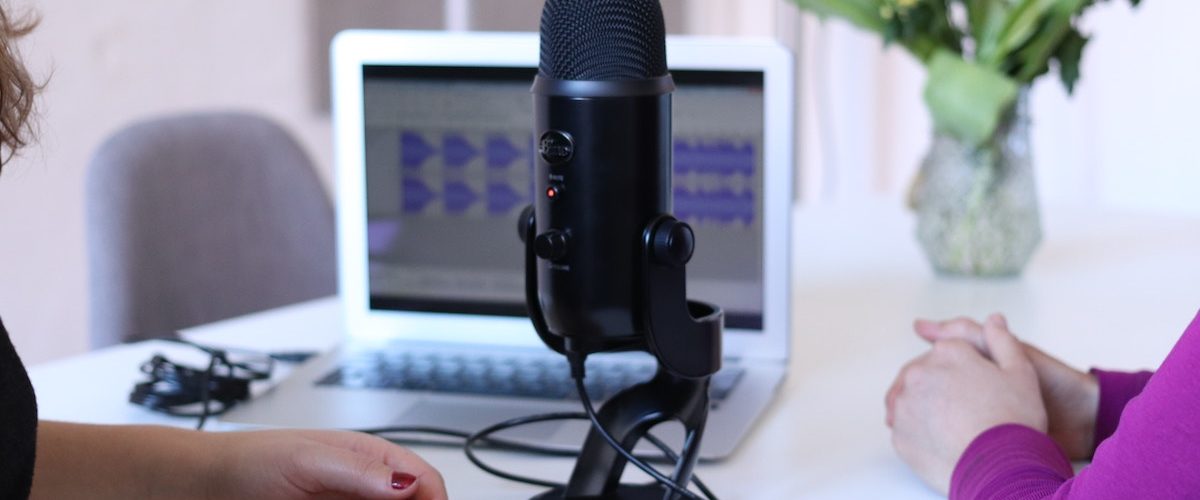


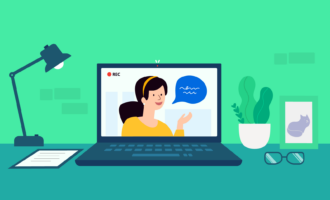







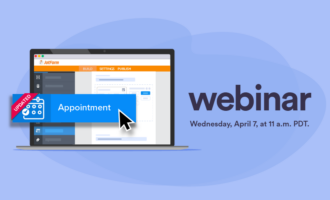


Send Comment: